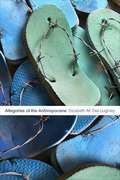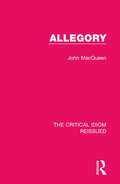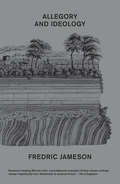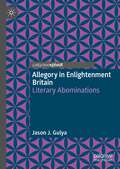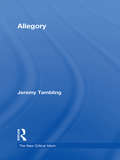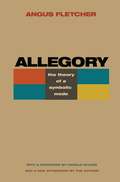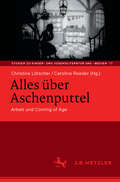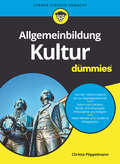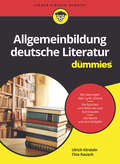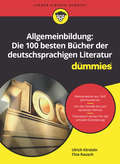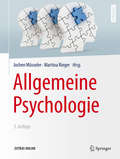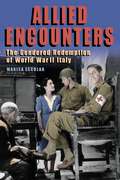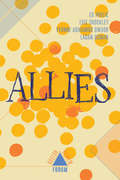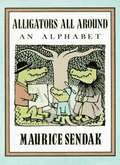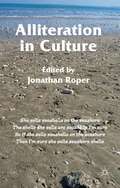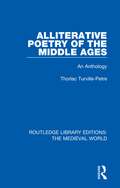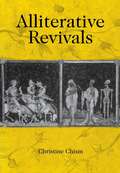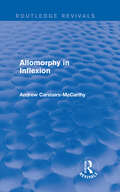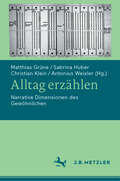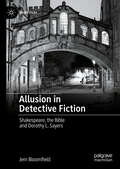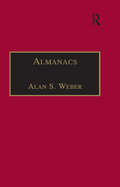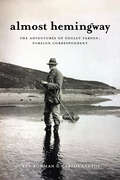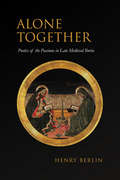- Table View
- List View
Allegories of the Anthropocene
by Elizabeth M. DeLoughreyIn Allegories of the Anthropocene Elizabeth M. DeLoughrey traces how indigenous and postcolonial peoples in the Caribbean and Pacific Islands grapple with the enormity of colonialism and anthropogenic climate change through art, poetry, and literature. In these works, authors and artists use allegory as a means to understand the multiscalar complexities of the Anthropocene and to critique the violence of capitalism, militarism, and the postcolonial state. DeLoughrey examines the work of a wide range of artists and writers—including poets Kamau Brathwaite and Kathy Jetñil-Kijiner, Dominican installation artist Tony Capellán, and authors Keri Hulme and Erna Brodber—whose work addresses Caribbean plantations, irradiated Pacific atolls, global flows of waste, and allegorical representations of the ocean and the island. In examining how island writers and artists address the experience of finding themselves at the forefront of the existential threat posed by climate change, DeLoughrey demonstrates how the Anthropocene and empire are mutually constitutive and establishes the vital importance of allegorical art and literature in understanding our global environmental crisis.
Allegory (The Critical Idiom Reissued #13)
by John MacQueenFirst published in 1970, this book examines the use of allegory in religious, philosophical and literary texts. It traces the development of the device over time from the Classical period through to the early modern and modern periods, demonstrating its evolution from the transmission of myths and religious beliefs to a literary device.
Allegory Studies: Contemporary Perspectives (Warwick Series in the Humanities)
by Vladimir BrljakAllegory Studies: Contemporary Perspectives collects some of the most compelling current work in allegory studies, by an international team of researchers in a range of disciplines and specializations in the humanities and cognitive sciences. The volume tracks the subject across established disciplinary, cultural, and period-based divides, from its shadowy origins to its uncertain future, and from the rich variety of its cultural and artistic manifestations to its deep cognitive roots. Allegory is everything we already know it to be: a mode of literary and artistic composition, and a religious as well as secular interpretive practice. As the volume attests, however, it is much more than that—much more than a sum of its parts. Collectively, the phenomena we now subsume under this term comprise a dynamic cultural force which has left a deep imprint on our history, whose full impact we are only beginning to comprehend, and which therefore demands precisely such dedicated cross-disciplinary examination as this book seeks to provide.
Allegory and Ideology
by Fredric JamesonFredric Jameson takes on the allegorical formWorks do not have meanings, they soak up meanings: a work is a machine for libidinal investments (including the political kind). It is a process that sorts incommensurabilities and registers contradictions (which is not the same as solving them!) The inevitable and welcome conflict of interpretations - a discursive, ideological struggle - therefore needs to be supplemented by an account of this simultaneous processing of multiple meanings, rather than an abandonment to liberal pluralisms and tolerant (or intolerant) relativisms. This is not a book about "method", but it does propose a dialectic capable of holding together in one breath the heterogeneities that reflect our biological individualities, our submersion in collective history and class struggle, and our alienation to a disembodied new world of information and abstraction. Eschewing the arid secularities of philosophy, Walter Benjamin once recommended the alternative of the rich figurality of an older theology; in that spirit we here return to the antiquated Ptolemaic systems of ancient allegory and its multiple levels (a proposal first sketched out in The Political Unconscious); it is tested against the epic complexities of the overtly allegorical works of Dante, Spenser and the Goethe of Faust II, as well as symphonic form in music, and the structure of the novel, postmodern as well as Third-World: about which a notorious essay on National Allegory is here reprinted with a theoretical commentary; and an allegorical history of emotion is meanwhile rehearsed from its contemporary, geopolitical context.
Allegory in Enlightenment Britain: Literary Abominations
by Jason J. GulyaThis Palgrave Pivot argues for the significance of allegory in Enlightenment writing. While eighteenth-century allegory has often been dismissed as an inadequate form, both in its time and in later scholarship, this short book reveals how Enlightenment writers adapted allegory to the cultural changes of the time. It examines how these writers analyzed earlier allegories with scientific precision and broke up allegory into parts to combine it with other genres. These experimentations in allegory reflected the effects of empiricism, secularization and a modern aesthetic that were transforming Enlightenment culture. Using a broad range of examples – including classics of the genre, eighteenth-century texts and periodicals – this book argues that the eighteenth century helped make allegory the flexible, protean literary form it is today.
Allegory: Allegory And Literature Of The City (The New Critical Idiom)
by Jeremy TamblingIndispensable to an understanding of Medieval and Renaissance texts and a topic of controversy for the Romantic poets, allegory remains a site for debate and controversy in the twenty-first-century. In this useful guide, Jeremy Tambling: presents a concise history of allegory, providing numerous examples from Medieval forms to the present day considers the relationship between allegory and symbolism analyses the use of allegory in modernist debate and deconstruction, looking at critics such as Walter Benjamin and Paul de Man provides a full glossary of technical terms and suggestions for further reading. Allegory offers an accessible, clear introduction to the history and use of this complex literary device. It is the ideal tool for all those seeking a greater understanding of texts that make use of allegory and of the significance of allegorical thinking to literature.
Allegory: The Theory of a Symbolic Mode
by Angus FletcherAnyone who has ever said one thing and meant another has spoken in the mode of allegory. The allegorical expression of ideas pervades literature, art, music, religion, politics, business, and advertising. But how does allegory really work and how should we understand it? For more than forty years, Angus Fletcher's classic book has provided an answer that is still unsurpassed for its comprehensiveness, brilliance, and eloquence. With a preface by Harold Bloom and a substantial new afterword by the author, this edition reintroduces this essential text to a new generation of students and scholars of literature and art.Allegory puts forward a basic theory of allegory as a symbolic mode, shows how it expresses fundamental emotional and cognitive drives, and relates it to a wide variety of aesthetic devices. Revealing the immense richness of the allegorical tradition, the book demonstrates how allegory works in literature and art, as well as everyday speech, sales pitches, and religious and political appeals.In his new afterword, Fletcher documents the rise of a disturbing new type of allegory--allegory without ideas.
Allen and Greenough's New Latin Grammar
by James B Greenough G. L. Kittredge Benj. L. D'Ooge A. A. Howard J. H. AllenA venerable resource for more than a century, Allen and Greenough's New Latin Grammar is still regarded by students and teachers as the finest Latin reference grammar available. Concise, comprehensive, and well organized, it is unrivaled in depth and clarity, placing a wealth of advice on usage, vocabulary, diction, composition, and syntax within easy reach of Latin scholars at all levels. This sourcebook's three-part treatment starts with words and forms, covering parts of speech, declensions, and conjugations. The second part, syntax, explores cases, moods, and tenses. The concluding section offers information on archaic usages, Latin verse, and prose composition, among other subjects. Extensive appendixes feature a glossary of terms and indexes. Students of history, religion, and literature will find lasting value in this modestly priced edition of a classic guide to Latin.
Alles über Aschenputtel: Arbeit und Coming of Age (Studien zu Kinder- und Jugendliteratur und -medien #17)
by Andrea-Luca BossardDer Band beleuchtet das Spannungsfeld von Jugend, Arbeit und Erzählen in unterschiedlichen Aus-drucksformen vom 18. Jahrhundert bis in die Gegenwart. Die Erzählung vom Aschenputtel mit dem märchenhaften Happy Ending lässt sich von 1812 und dem Ersterscheinen der Kinder- und Hausmärchen bis zu Kenneth Branaghs Adaption von Perraults Cendrillon 2015 und weiter verfolgen. Im Märchen ist die Bereitschaft (Care-)Arbeit zu leisten ein wesentlicher Aspekt der moralischen In-tegrität der angehenden Prinzessin – ganz ähnlich wird dies in neueren dystopischen Romanen ablesbar, in denen nur überlebt, wer auch anpacken und solidarisch handeln kann. Nicht nur ein Blick in die Literaturgeschichte zeigt: Arbeit, Armut und soziale Fragen sind zentrale Themen der Literatur, die jedoch wesentlich Konjunkturen des Interesses unterworfen waren. In der deutschsprachigen Gegenwartsliteratur seit der Jahrtausendwende bedeuten sie zentrale Diskurse und wirkungsmächtige Narrative.Arbeit und ihre soziale Bedeutung werden in Coming-of-Age-Erzählungen auf vielfache Weise verhandelt. So ist z.B. das kapitalistische System und damit verbunden verschiedenste Arbeitsnarrative in vielerlei Hinsicht präsent – in der Inszenierung des Konsums der Figuren, in Mode und Lifestyle; auch an der Zeichnung von Familienbildern, an den Berufen bzw. dem Habitus der literarischen Elternfiguren sowie in verkörperten sozialen Praktiken und Ungleichheiten tritt dies hervor.
Allgemeinbildung Kultur für Dummies (Für Dummies)
by Christa PöppelmannDie Geschichte der Kultur ist schillernd, vielseitig und spannend. Begegnen Sie mit diesem Buch den schönen Künsten und beschäftigen Sie sich mit Literatur und Musik, mit Schauspiel und Tanz. Lernen Sie die vielfältige Welt des Glaubens und Denkens kennen und lassen Sie sich zeigen, wie moderne Medien und die heutige Alltagskultur Althergebrachtes verändern. Christa Pöppelmann zeigt aber auch, wie die verschiedenen Kulturen aufeinander aufbauten, einander inspirierten, aber auch miteinander in Konflikt gerieten. Erleben Sie Bekanntes in neuem Licht und lassen Sie sich durch viel Neues faszinieren, bilden und bereichern.
Allgemeinbildung deutsche Literatur für Dummies (Für Dummies)
by Ulrich Kirstein Tina RauschGanz oben in der Liste der Themen, die zur Allgemeinbildung zählen, steht die deutsche Literatur, die Literatur aus dem Land der Dichter und Denker. Dieses Buch gibt Ihnen einen Überblick über die Gattungen Prosa, Lyrik und Drama und leitet Sie durch die Epochen. Minnesang, Aufklärung, Klassik, Romantik, Realismus und Naturalismus, klassische Moderne und zeitgenössische Literatur bleiben dabei nicht abstrakte Begriffe. Die Autoren geben Einblick in die Werke und erzählen vom Leben der Schriftsteller, deren Freundschaften und Feindschaften, deren Kampf um Anerkennung und deren Reaktion auf unbarmherzige Kritik. Und alle, die den ganz schnellen Überblick bekommen wollen, finden hier Listen mit zehn Schriftstellern, die man kennen sollte, zehn Schriftstellerinnen, die man kennen sollte, und mit zehn Schreibenden, die zu Unrecht vergessen wurden.
Allgemeinbildung: Die 100 besten Bücher der deutschsprachigen Literatur für Dummies (Für Dummies)
by Ulrich Kirstein Tina RauschIn zehn Kapiteln stellen die Autoren jeweils zehn Meisterwerke der deutschen Literatur vor - nicht chronologisch sortiert, sondern thematisch gebündelt. In den ausgewählten Büchern geht es um Humor und Melancholie, Liebe und Schmerz, Gesellschaft und Familien, Abenteuer und Spannung, Krieg und Frieden, Hin und Weg, Freund und Feind, Künstler und Helden, Stadt und Land, Fantasie und Wahn. Stöbern Sie durch die Kapitel, finden Sie Ihre Meisterwerke von Grimmelshausen bis Juli Zeh, von Adelbert von Chamisso bis Feridun Zaimoglu und genießen Sie die schier unendliche Vielfalt der deutschsprachigen Literatur.
Allgemeine Psychologie
by Jochen Müsseler Martina RiegerDas Lehrbuch bietet einen umfassenden Einblick in zentrale Aspekte menschlichen Erlebens und Verhaltens. Hierbei stehen Prozesse und Mechanismen der psychischen Vorg#65533;nge im Vordergrund, welche aus kognitions- und neurowissenschaftlicher Perspektive betrachtet werden. Inhaltlich werden in diesem Standardwerk folgende wesentliche Themenbereiche dargestellt: Wahrnehmung und Aufmerksamkeit Emotion und Motivation Lernen und Ged#65533;chtnis Sprachproduktion und -verstehen Denken und Probleml#65533;sen Handlungsplanung und -ausf#65533;hrung Die Kapitel sind von Spezialisten des jeweiligen Gebietes geschrieben. Diese dritte Auflage wurde grundlegend aktualisiert und durch zus#65533;tzliche Kapitel zur multisensorischen Verarbeitung, zum logischen Denken, zu Urteilen und Entscheiden, zum motorischen Lernen und zu Embodied Cognition und Agency erg#65533;nzt. Die Inhalte werden nun durch konkrete Anwendungsbeispiele - aus der Forschung f#65533;r die Praxis - und informative, farbige Illustrationen und ein didaktisch ausgereiftes Layout noch st#65533;rker veranschaulicht. Wie auch die ersten beiden Auflagen bietet diese Auflage eine kompetente Einf#65533;hrung f#65533;r Studierende, die ideal ist zur Pr#65533;fungsvorbereitung im Bachelor- und Masterstudium. Gleichzeitig ist dieses Werk ein optimales Nachschlagewerk f#65533;r wissenschaftlich und praktisch arbeitende Psychologen und Personen benachbarter Disziplinen. #65533;ber www. lehrbuch-psychologie. de werden f#65533;r Studierende und Dozenten hilfreiche Online-Zusatzmaterialien zur Verf#65533;gung gestellt.
Allied Encounters: The Gendered Redemption of World War II Italy (World War II: The Global, Human, and Ethical Dimension)
by Marisa EscolarHonorable Mention for the 2019 American Association for Italian American Book Prize (20-21st Centuries)Allied Encounters uniquely explores Anglo-American and Italian literary, cinematic, and military representations of World War II Italy in order to trace, critique, and move beyond the gendered paradigm of redemption that has conditioned understandings of the Allied–Italian encounter. The arrival of the Allies’ global forces in an Italy torn by civil war brought together populations that had long mythologized one another, yet “liberation” did not prove to be the happy ending touted by official rhetoric. Instead of a “honeymoon,” the Allied–Italian encounter in cities such as Naples and Rome appeared to be a lurid affair, where the black market reigned supreme and prostitution was the norm. Informed by the historical context as well as by their respective traditions, these texts become more than mirrors of the encounter or generic allegories. Instead, they are sites in which to explore repressed traumas that inform how the occupation unfolded and is remembered, including the Holocaust, the American Civil War, and European colonialism, as well as individual traumatic events like the massacre of the Fosse Ardeatine and the mass civilian rape near Rome by colonial soldiers
Allies (Boston Review Forum)
by Yvonne Adhiambo Owuor Ed Pavlic Ladan Osman Evie ShockleyOriginal poetry, fiction, and cultural criticism explore issues of trust, bridge-building, difference, and betrayal, both political and private.How do we know who is on our side? Is it possible for someone who is not like us to share our hopes? Can links forged by empathy or mutual interest match those created by shared experience? What can we gain from alliances that we cannot achieve on our own?These are difficult question to answer even in intimate settings, and more so in arenas of cultural and political struggle. Through original poetry, fiction, and cultural criticism from both established writers and newcomers, Allies offers unique insights into issues of trust, bridge-building, difference, and betrayal. Drawing on the prophetic power of the imagination to conjure both the possible dangers and life-giving possibilities of alliances—be they political, private (such as marriage), therapeutic, or even aesthetic (between readers and writers, for example)—Allies will be essential reading for our times.Allies is the first publication of Boston Review's newly inaugurated Arts in Society department. A radical revisioning of the magazine's poetry and fiction, the department unites them—along with cultural criticism and belles lettres—into a project that explores how the arts can speak directly to the most pressing political and civic concerns of our age, from growing inequality to racial and gender regimes, a disempowered electorate, and a collapsing natural world.
Alligators All Around
by Maurice SendakThe alligator family races through the alphabet. "U usually upside down [illustration: Papa and Boy are standing on their hands and heads]" A fun book for kids and adults to read together. This file should make an excellent embossed braille copy.
Alliteration in Culture
by Jonathan RoperAlliteration occurs in a wide variety of contexts in stress-initial languages, including Icelandic, Finnish and Mongolian. It can be found in English from Beowulf to The Sun . Nevertheless, alliteration remains an unexamined phenomenon. This pioneering volume takes alliteration as its central focus across a variety of languages and domains.
Alliterative Poetry of the Later Middle Ages: An Anthology (Routledge Library Editions: The Medieval World #52)
by Thorlac Turville-PetreOriginally published in 1989, Alliterative Poetry of the Later Middle Ages is an anthology of texts looking at the tradition of alliterative poetry in medieval English literature. The book presents lesser known alliterative Middle English poems, which are unmodernised and include explanatory footnotes designed to give clarity to the text and enable critical response to the texts. The book illustrates the great range and variety of alliterative verse, both rhymed and unrhymed. The poems range from descriptions of armies, bloody battles, dramatic storms and dreams of goddesses. Whatever the subject, social and political satire, theological controversy and moral admonition is always given a lively and interesting setting. The book contains a succinct and incisive introductory material and a carefully selected bibliography which will encourage further reading.
Alliterative Revivals
by Christine ChismAlliterative Revivals is the first full-length study of the sophisticated historical consciousness of late medieval alliterative romance. Drawing from historicism, feminism, performance studies, and postcolonial theory, Christine Chism argues that these poems animate British history by reviving and acknowledging potentially threatening figures from the medieval past--pagan judges, primeval giants, Greek knights, Jewish forefathers, Egyptian sorcerers, and dead ancestors. In addressing the ways alliterative poems centralize history--the dangerous but profitable commerce of the present with the past--Chism's book shifts the emphasis from the philological questions that have preoccupied studies of alliterative romance and offers a new argument about the uses of alliterative poetry, how it appealed to its original producers and audiences, and why it deserves attention now.Alliterative Revivals examines eight poems: St. Erkenwald, Sir Gawain and the Green Knight, The Wars of Alexander, The Siege of Jerusalem, the alliterative Morte Arthure, De Tribus Regibus Mortuis, The Awntyrs off Arthure, and Somer Sunday. Chism both historicizes these texts and argues that they are themselves obsessed with history, dramatizing encounters between the ancient past and the medieval present as a way for fourteenth-century contemporaries to examine and rethink a range of ideologies.These poems project contemporary conflicts into vivid, vast, and spectacular historical theaters in order to reimagine the complex relations between monarchy and nobility, ecclesiastical authority and lay piety, courtly and provincial culture, western Christendom and its easterly others, and the living and their dead progenitors. In this, alliterative romance joins hands with other late fourteenth-century literary texts that make trouble at the borders of aristocratic culture.
Allomorphy in Inflexion (Routledge Revivals)
by Andrew Carstairs-McCarthyFirst published in 1987, this book broke new ground in research on inflectional morphology. Drawing on evidence from a wide variety of languages, it shows that this is not just a phenomenon left over from obsolete phonological processes but a subject deserving of respect in its own right. The book proposes constraints in three areas: (1) the organization of inflection class systems; (2) inflectional homonymy, or syncretism; (3) the direction of allomorphic conditioning. Carstairs-McCarthy’s notion of ‘paradigm economy’ revolutionized the study of inflection class systems but in its purest form, presented in this book, the hypothesis was too strong. In more recent works, the author has therefore argued that a version of it is an unexpected by-product of the brain’s aptitude for handling multiple vocabularies. The study of inflectional homonymy was pioneered by Roman Jakobson as evidence for the structuring of morphosyntactic categories or feature sets (case, number, tense, mood and so on) but his approach differed from that of this book, whose radical suggestions fertilized much subsequent work on ‘inflectional identity’. The direction of conditioning, first explored in this text, is debated actively within the Distributed Morphology framework popular within Chomskyan generative linguistics, despite disagreement with the Carstairs-McCarthy view that morphology is a domain of grammar entirely distinct from syntax. In The Evolution of Morphology (2010) the author takes these topics further, and also explains why stem alternation and affixation are importantly distinct as modes of inflectional expression. Inflectional allomorphy is an apparently pointless complication exhibited by many languages. However, this book suggests reasons why it is, nevertheless, easy for the brain to handle. The work thus has important implications beyond language, extending into human cognition.
Alltag erzählen: Narrative Dimensionen des Gewöhnlichen
by Christian Klein Antonius Weixler Sabrina Huber Matthias GrüneErzählen ist eine Alltagspraxis und zugleich eine Praxis, in der Alltag (re-)produziert wird. Denn das Erzählen im Alltag hat selten das wirklich Außergewöhnliche und Unerhörte zum Gegenstand. In der Regel dreht es sich um Gewöhnliches, um die banalen Routinen, die sich lediglich in Nuancen von einem Tag zum nächsten unterscheiden. Wir nutzen das Erzählen nicht nur, um neuartige Erfahrungen kognitiv zu verarbeiten; wir brauchen es auch als ein Instrument der Interaktion, als Möglichkeit, den Gegenüber am eigenen Leben teilhaben zu lassen und die Alltagswelt so als eine intersubjektiv geteilte Welt zu konstituieren. Das Erzählte ist dann allein deshalb erzählwürdig, weil wir es erzählen möchten. So großzügig das Kriterium der tellability im alltäglichen Erzählen aus diesem Grund ausgelegt werden kann, so verbindlich scheint es im literarischen und fiktionalen Erzählen. Dort erwarten wir als Rezipient*innen gemeinhin das Nichtalltägliche, wollen durch überraschende Plot-Twists und ungewöhnliche Verwicklungen unterhalten werden. Der Alltag als Gegenstand müsste hier eigentlich die Ausnahme sein, allerdings kommt häufig gerade der Darstellung des Gewöhnlichen im fiktionalen Erzählen eine wichtige Funktion zu, etwa um im Sinne eines Realitätseffekts die Bewohnbarkeit der Erzählwelt oder die ›Authentizität‹ des Erzählten auszuweisen. Ebenso können Erzählungen Rezeptionserwartungen kalkuliert unterlaufen, um die Aufmerksamkeit explizit auf die Strukturen der Alltagswelt zu lenken. Der Sammelband setzt sich das Ziel, das komplexe Verhältnis von Erzählen und Alltag aus unterschiedlichen disziplinären Perspektiven zu erhellen. Er will die narrativen Dimensionen des Gewöhnlichen sowohl in der Praxis der Alltagserzählung als auch im Hinblick auf literarisch-fiktionale Erzähltexte beleuchten. Willkommen sind neben literarhistorischen Fallstudien zur narrativen Dimension des Gewöhnlichen im Hinblick auf Einzeltexte, Autoren, Genres, Epochen etc. insb. Beiträge, die auch systematische oder theoretische Fragen fokussieren.
Allusion in Detective Fiction: Shakespeare, the Bible and Dorothy L. Sayers (Crime Files)
by Jem BloomfieldThis study argues that allusion is a central part of classic British detective fiction. It demonstrates the fraught status of Shakespeare and the Bible during the Golden Age of the British detective novel, and the cultural currents which novelists navigated whilst alluding to them. The first part traces the complex web of allusions to Shakespeare and the Bible which appear in the novels of Agatha Christie and Dorothy L. Sayers, examining the meanings these allusions produce. The second part explores the way in which Sayers’ own collection of detective novels became a canon, on which later novelists exercised those same allusive practices. It studies allusions to Sayers’ novels throughout the twentieth century and into the twenty-first, from Gladys Mitchell and P.D. James to Reginald Hill and Sujata Massey. This study reveals allusion as a shaping force at the origin of the classic British detective novel, and a continuing element in its identity.
Almanacs: Printed Writings 1641–1700: Series II, Part One, Volume 6 (The Early Modern Englishwoman: A Facsimile Library of Essential Works & Printed Writings, 1641-1700: Series II, Part One #Vol. 6)
by Alan S. WeberAlmanacs were highly influential on popular opinion during the early modern period. They were the least expensive kinds of books and had a practical use as a calendar, literary miscellany, weather guide and advertising medium. The almanacs in this volume contribute to our understanding of women's participation in popular culture, astrology, medicine and prophecy. Sarah Jinner's almanacs for the years 1658, 1659 and 1664, and Mary Holden's almanacs for 1688 and 1689 show a conscious effort to distance themselves from other female religious prophets of the period by relying on the status of astrology as a rational science. The other works in the volume are all attributed to writers who were probably pseudonymous. Dorothy Partridge's The Woman's Almanack for the Year 1694 includes several short articles on chiromancy. The Prophesie of Mother Shipton concerns the prediction of the deaths of Cardinal Wolsey and Thomas Cromwell. The final works in the volume comprise two texts by Shinkin ap Shone which satirize the Welsh people and language, and The Woman's Alamanack by Sarah Ginnor which uses sexual humour to parody the medical advice offered in Jinner's almanacs.
Almost Hemingway: The Adventures of Negley Farson, Foreign Correspondent
by Carlos Santos Rex BowmanWould it surprise you to learn that there was a contemporary of Ernest Hemingway’s who, in his romantic questing and hell-or-high-water pursuit of life and his art, was closer to the Hemingwayesque ideal than Hemingway himself? Almost Hemingway relates the life of Negley Farson, adventurer, iconoclast, best-selling writer, foreign correspondent, and raging alcoholic who died in oblivion. Born only a few years before Hemingway, Farson had a life trajectory that paralleled and intersected Hemingway’s in ways that compelled writers for publications as divergent as the Guardian and Field & Stream to compare them. Unlike Hemingway, however, Farson has been forgotten.This high-flying and literate biography recovers Farson’s life in its multifaceted details, from his time as an arms dealer to Czarist Russia during World War I, to his firsthand reporting on Hitler and Mussolini, to his assignment in India, where he broke the news of Gandhi’s arrest by the British, to his excursion to Kenya a few years before the Mau Mau Uprising. Farson also found the time to publish an autobiography, The Way of a Transgressor, which made him an international publishing sensation in 1936, as well as Going Fishing, one of the most enduring of all outdoors books.F. Scott Fitzgerald, a fellow member of the Lost Generation whose art competed with a public image grander than reality, once confessed that while he had to rely on his imagination, Farson could simply draw from his own event-filled life. Almost Hemingway is the definitive window on that remarkable story.
Alone Together: Poetics of the Passions in Late Medieval Iberia (Toronto Iberic)
by Henry BerlinThe turn of the fifteenth century saw an explosion of literature throughout Iberia that was not just sentimental, but about sentiment. Alone Together reveals the political, ethical, and poetic dimensions of this phenomenon, which was among the most important of the substantial changes in intellectual and literary culture taking place in the crowns of Portugal, Castile, and Aragon. With careful analyses of lyric poetry, sentimental prose, and wide-ranging treatises in multiple languages, this study foregrounds the dense web of relations among these genres and linguistic and cultural traditions. Drawing on Stoic and early monastic thought, authors such as the Marqués de Santillana, Ausiàs March, and Alfonso de Madrigal explored the unifying potential of shared emotion in an ethical rehabilitation that cut across the personal and political, exalting friendly conversation, civic communication, and collective poetic composition. In his readings of these authors, Henry Berlin references recent work on lyric theory and the history and theory of emotion, from classical antiquity to the modern day. An exploration of the political and poetic potential of shared emotion, Alone Together shows how a heuristic focus on the notion of passion is illuminating for broader ongoing discussions about the nature of emotion, the lyric, and subjectivity.
